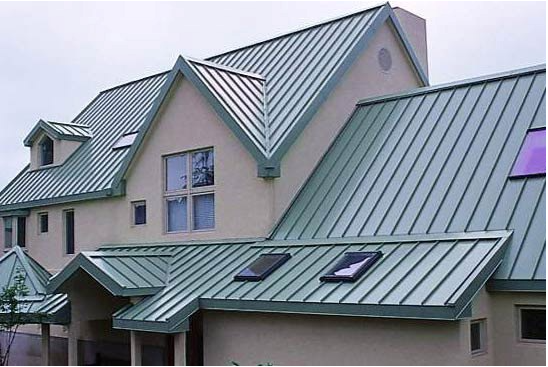If you are looking to purchase a new home with a fixed fee conveyancing agency like Sam Conveyancing you’ll want to ensure the property you desire has the right roof.
A flat roof that is never totally flat in the true sense. There must be a slight pitch in order for rainwater to drain away effectively. A flat roof, therefore, could have a pitch of a few degrees. If you’re thinking of installing a flat roof, there are some pros and cons to examine first. You’ll want to consider whether it’s for a commercial or residential property, is the roof structure an integral part of the building’s design, the style of the property and your budget. Here are some factors to consider about flat and pitched roofing:
Maintenance
Both types of roof, flat and pitched will need regular maintenance. Pitched rooftops are generally trickier to inspect and clean due to the sloping aspect. However, a flat roof normally requires a little more maintenance throughout its lifespan. The drainage aspect of a flat roof is not as effective as a pitched one, for obvious gravitational reasons. Without regular inspection and maintenance, a flat roof can be more prone to water damage, drain clogging and possibly leaks. It must have a waterproof seal that will require maintenance on an on-going basis to avoid problems and potentially costly repairs. If you’re thinking of installing a flat roof, ensure you have the time to commit to regular inspections and upkeep to keep it in tip-top condition.
Cost
Having a flat roof often works out more economical than a pitched one, sometimes by as much as a couple of thousand pounds. If you live in an area of significant rainfall though, you might have increased expenditure on maintenance and repair work, so you’ll want to factor that into the equation. Flat roof repair work can sometimes be costlier than those needed for pitched roofing as they are less likely to suffer from moisture damage. You’ll need to weigh up the pros and cons of money saved now, or potential money saved in the future.
Structure
Which type of roof is better suited to your property style? Pitched roof is generally more stable and offers stronger structure but a flat roof is a more economical choice and looks more modern. If you’re seeking a contemporary design, then a flat roof is more appealing, as is a pitched roof with a low slope, which is another angle you could consider.
Flat vs Pitched
Pitched – Pitched roofing features two slopes that rise up to meet at a peak. They are used to provide strength and durability and provide a space to be utilised as a loft area. This can help maximise available living space and offers flexibility that a flat roof doesn’t. A pitched roof offers more insulation for the property and won’t be subjected to any extremes of temperature so much.
However, they are also more expensive and due to the complex nature of a pitched roof design, require considerable material and labour costs. It could also cause problems concerning the depth of your building’s footings, placing bigger strain on the foundations. For instance, it might not be possible to replace a previous flat roof with a pitched one.
Flat – This type of roof offers compact and space-saving designs. They are ideal for smaller structures like garages, extensions and porch areas. A flat roof consists of a horizontal base attached to ceiling joists and covered with a water-tight membrane. Such a roof can be an efficient and economical choice, involving far less labour and materials.


